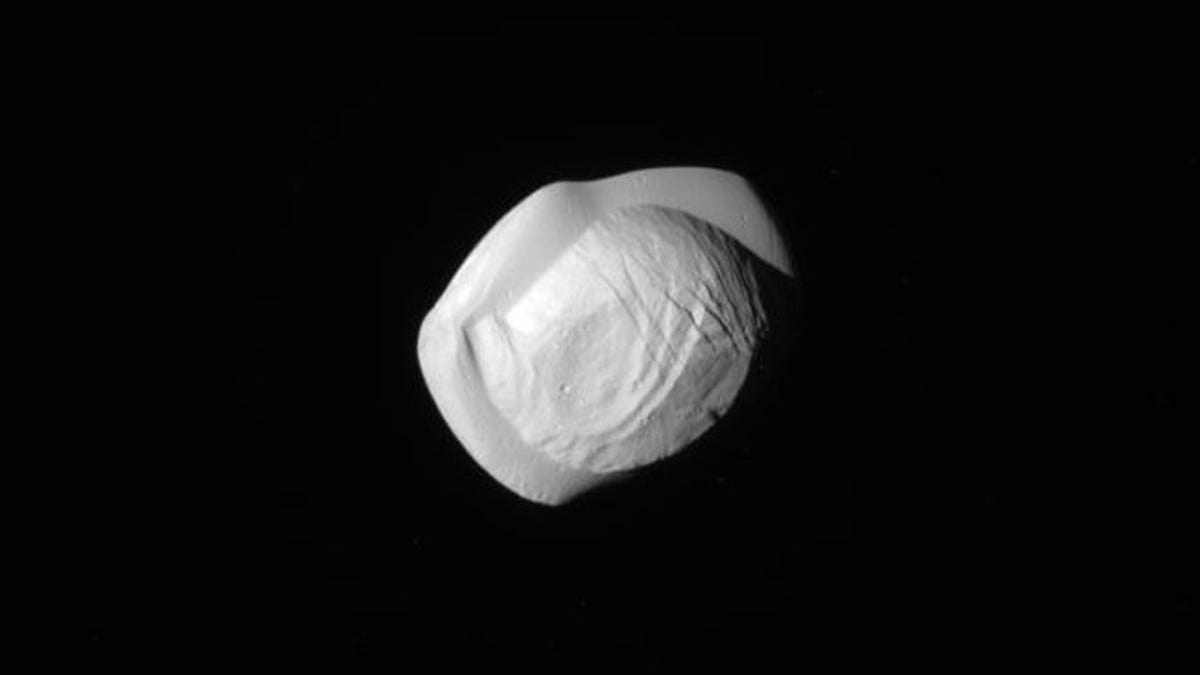Saturn's tiny moon Pan looks like a ravioli
You'll want to take a bite out of Pan after seeing new NASA images of Saturn's adorable and oddly shaped little moon.
Saturn's moon Pan is a dainty little thing with a diameter of just 17 miles (28 kilometers) across. It's also shaped like a piece of ravioli. A set of new NASA Cassini mission photos highlights just how much Pan resembles the stuffed pasta. It's so cute, you just want to eat it right up.
Cassini imaging chief Carolyn Porco shared some of the images on Twitter and answered questions about the strange shape. "For those who asked: Pan orbits in a ring gap of its own making. Early on & to some degree even now, ring material falls on its equator," she tweeted. That's how the moon gets its distinctive equatorial bulge.
Porco also listed out all the foods viewers think Pan resembles: "After 13 yrs, we've come to expect extreme reactions to our images. But hunger? Ravioli, tortellini, empanada, pierogi, hamburger, brie?" Pan also looks a bit like a classic UFO flying saucer.
Cassini snapped the images on March 7 and NASA highlighted them on Thursday, noting, "These images are the closest images ever taken of Pan and will help to characterize its shape and geology."
Despite its size, Pan makes a big impact on Saturn's rings by creating a dark gap known as the Encke Gap. The moon was discovered in 1990 after a close examination of photos from NASA's Voyager mission. The Cassini images give us an outstanding new view of the elusive little moon.
Cassini launched in 1997 as a joint project of NASA, the European Space Agency and the Italian Space Agency. The mission ends later this year when the spacecraft will burn up in Saturn's atmosphere after 13 productive years in orbit around the ringed planet.
Batteries Not Included: The CNET team reminds us why tech is cool.
CNET Magazine: Check out a sample of the stories in CNET's newsstand edition.



